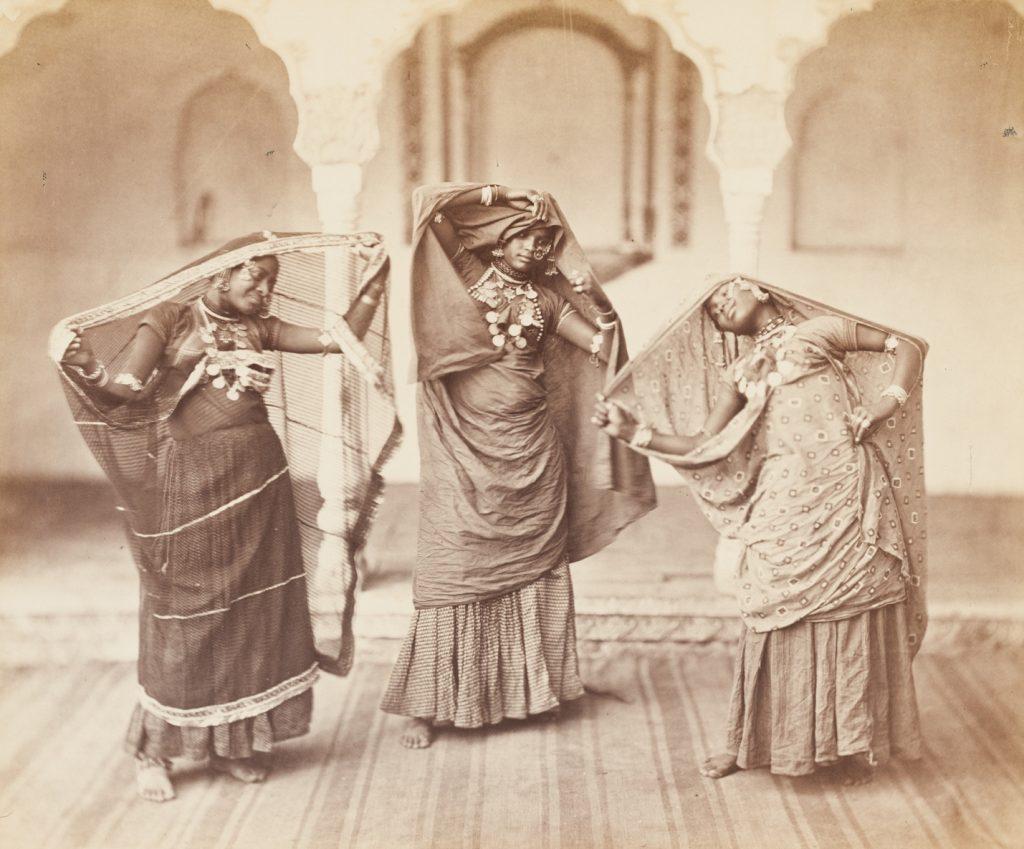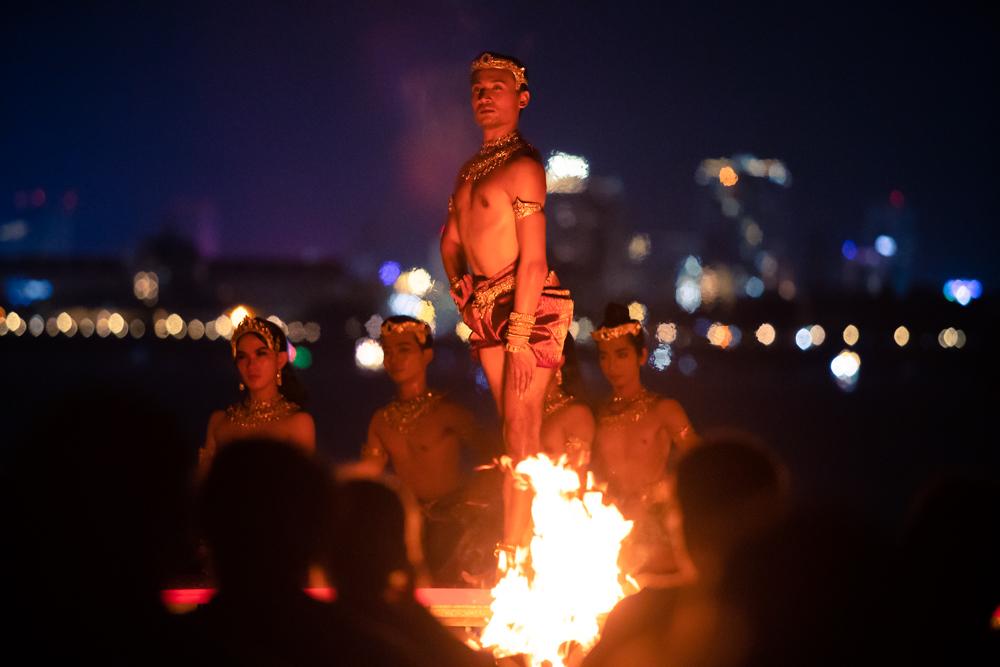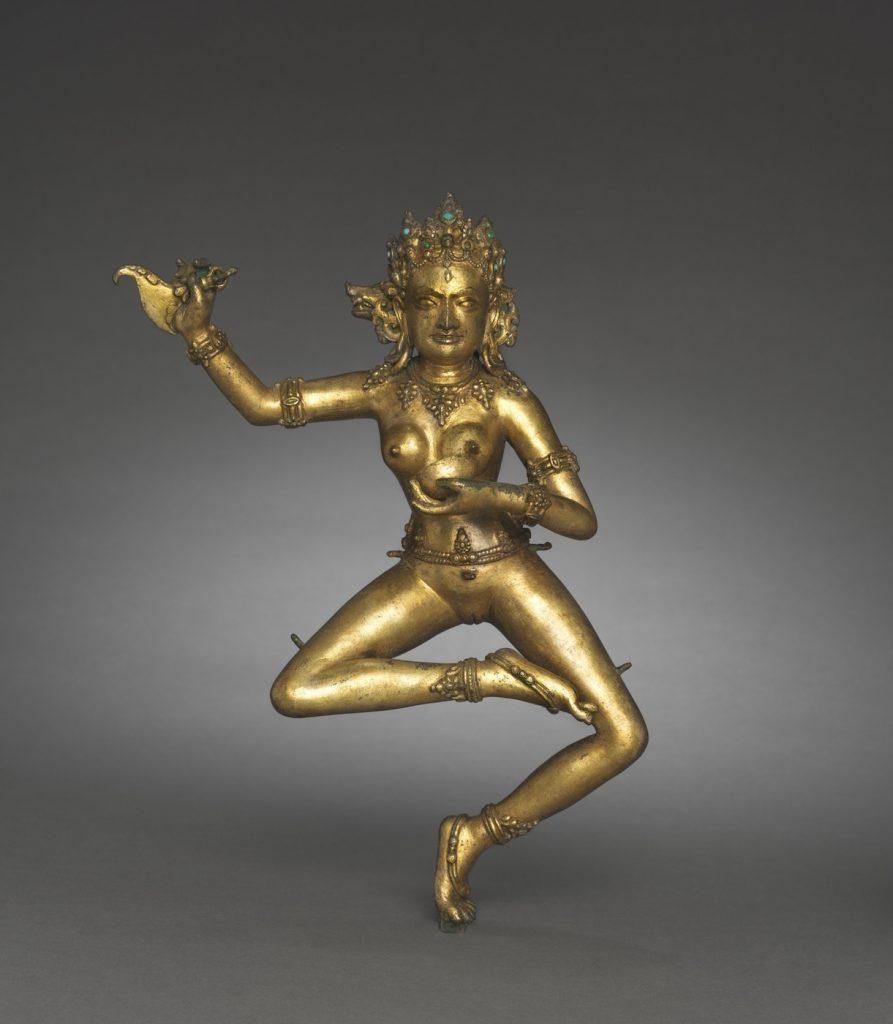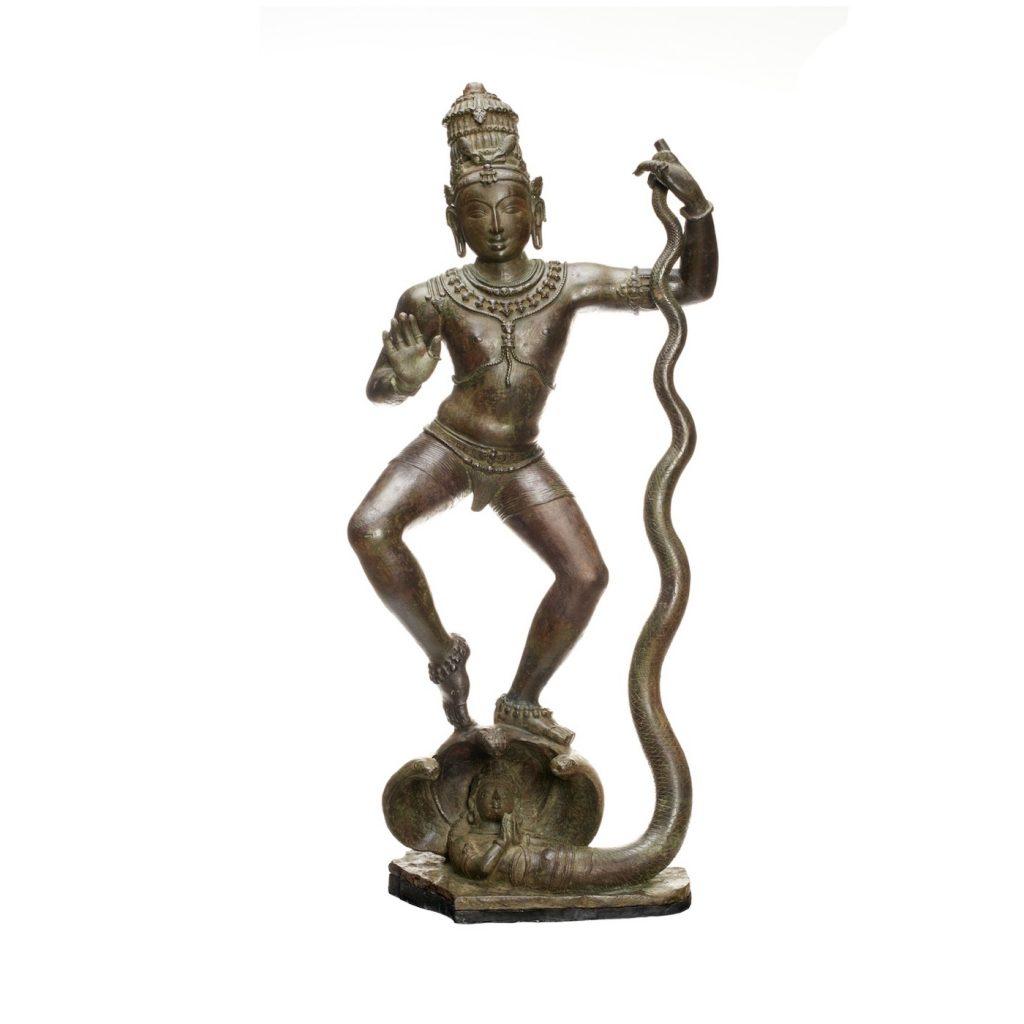From March 31 to July 10 in San Francisco, you will have the opportunity to see the rarest thing: an exhibition of Asian art that gives pride of place to dance. Dance has been the poor cousin of West Asian art history for decades: ignored as content, unused as context. This source of information on the spiritual practices and the true values of the cultures represented has long been obscured in favor of the historical priorities of art: age, material, style, size, market value. While art history and dance history work hand in hand in Chinese advanced scholarship, and while the value of dance is undisputed in Indian advanced scholarship, we in the West are only beginning to understand that the full meaning of dance is necessary to understand the ancient and Asian cultures. This full meaning to reside in Western society. Instead, we must look to other cultures for the traditions of body wisdom that we have lost.
Famous Indian scholar of Southeast Asian and Himalayan art and culture, Dr. Pratapaditya Pal produced an exhibition and book in 1997, Dancing on the flute, which examined older works of art, mostly from before 1600, that depict dance in India. This is a rare exhibition catalog on Asian art history taking dance in art as a subject. Dr. Pal opened the door for art historians to begin their foray into appreciating the moving art of dance. Today, 26 years later, a trio of American curators takes over and offers a new exhibition, a quantum advance in the history of art, taking dance as a subject in the West: Beyond Bollywood: 2 years of dance in art.

The original concept for a “dance in art” exhibit came from Laura Weinstein, who is the Ananda Coomaraswamy Curator of South Asian and Islamic Art at the Museum of Fine Arts, Boston. She saw it as a humanities project, in itself an ennobling way of dealing with dance, and saw it as a source of meaning. In the end, Weinstein was unable to continue the evolution of the exhibition, and his close collaborator, Forrest McGill, Chief Curator and Wattis Curator of South and Southeast Asian Art Is at the Asian Art Museum in San Francisco, began to develop a more historical exhibition of art, never losing sight of the original intention. Over time, McGill formed a relationship with Ainsley M. Cameron, Curator of South Asian Art, Islamic Art and Antiquities at the Cincinnati Art Museum, and an exhibition was born: Beyond Bollywood: 2000 years of dance in art. Co-produced by the Cincinnati Art Museum, where the show opened in November last year, the differently presented exhibition opens in San Francisco on March 31 and ends July 10. If you are anywhere around San Francisco, I invite you to go see it.
Part of the overall programming includes short gallery performances and live performances scheduled by Cambodian, Indonesian and contemporary dance companies. A group that I highly recommend – there is nothing like it anywhere – is the Cambodian Traditional Dancers Company led by Prumsodun Ok. He is a rigorous exponent of classical dance and a queer performer in the tradition. They do not deviate from the traditional expression; they are impeccable classical dancers. There is nothing broad or vulgar in this troupe. They are exquisite, with a version of their own identity that is entirely original and expressed in the most magnificent and noble forms. Artists of such confidence, skill and audacity are rare in this world. I wouldn't miss it.

The catalog essays are timely, perhaps overdue, and refreshing to see. When I started working with Buddhist dancing monks decades ago, I immediately noticed that certain characters in the pantheon were dancing, and more so, that certain deities and divine figures always dance. Yet it was never discussed by art historians even when it was the most obvious and central element of meaning in a painting or fresco. So, seeing Padam Kaimal's opening essay "Why Do Yoginis Dance?" I jumped for joy. Finally, an art historian asked this question. It is followed by the equally necessary essay by scholar Forrest McGill, "Dancing in Circles." The fundamental aspects of Asian dance are highlighted, which connect easily with the practice and study of the art. This articulation on the side of art history is a welcome gesture of openness towards the dancers who use art to understand, and towards the practitioners of the dances represented. Co-curator McGill brings clarity to interdisciplinary concepts.

The stability and excellence of this exhibition come from the high quality of conservation and research in art history. Another example of taking action to enhance interdisciplinary appreciation is that each of the thematic galleries – Destruction and Creation; Dedication; Subjection; Glorification; and Celebration – presents an isolated work of art to show how the sense of exhibition and gallery finds expression in the representation of dance. It acts as a primer for each gallery. It's fantastic. The viewer is invited to stop, think about something specific, and then move on to expanded examples. It's an elegant and simple way to share knowledge.
Briefly:
Creation and destruction: Dance Shiva Nataraj
Devotion: Lord Krishna dances with the cowgirls
Taxation: Tantric deity Hevajra dancing, surrounded by dance yoginis
Glorification: Dancers entertaining a nobleman
Party: Dancing villagers
There were other exhibitions that relied on a more avant-garde dance museology, such as that of Alexandra Munroe Third Mind, American artists contemplate Asia (2009) at the Guggenheim in New York; and several technologically innovative exhibits by Alex Siedlecki on Buddhism and dance at the Museo di Arte e Cultura Orientale in Tuscany, including Meditation in motion, step towards the sublime (2019) Dancing Your Life, Dance and Art in the 20th and 21st centuries (2012), at the Center Pompidou in Paris, was a sophisticated and beautiful integration of dance and fine art, both comprising vital cultural currents and mutually influencing each other. It was avant-garde in construction and multimedia concept, taking the mutual influence of dance and art as its subject. The Center Pompidou exhibition introduced a new approach to dance museology.
An archival multimedia celebration was the exhibition Merce Cunningham: Common Time (2017), an exhibition held in two museums highlighting the artistic elements of Cunningham's work, from films to sets. Cunningham has worked with leading contemporary artists. This avant-garde approach to the conservation of dance in art and dance as art was created by the Museum of Contemporary Art in Chicago, in collaboration with the Walker Art Center in Minneapolis. A superb catalog of this exhibition is available. The goal here in San Francisco is to address the subject of dance in art, stemming from the discipline of Asian art history. He succeeds, being such a fine example of what he is.
The exhibit features dance performances from Hindu, Buddhist, Muslim and tribal societies. The history of art, like the history of dance, finds many links in tantra of all persuasions, Hindu and Buddhist, secular and clothed, insofar as the theme of non-duality itself challenges sectarianism. Again, these curators let the art do the teaching, and the selection is sublime. Dancing divinities, dancing animals, dancers; masked dance, social dance, dance of the powers of the universe: Shiva Nataraj, performing the cosmic dance of creation and destruction, frozen in action like a bronze.

Because the examples of art are so good – and by that specifically I mean that not only is the dance as a symbol created by the art offered, but the dance itself as a sequence of steps, movements and positions – the absence of any real dance research in the exhibition is obvious to me. There are good scholars, like Alessandra Iyer, a specialist in sculpture and dance from Java, who really know how to interpret art from the point of view of historical dance practice. It would have brought another dimension of understanding, denied to most of us.
Ohio, where this show was born, has an excellent dance research institution: the Graduate School of Dance at Ohio State University, one of the best in the world. These resources could have been incorporated into the dance-themed exhibit without too much trouble, provided there was a mutually reinforcing collaboration. Seeing how thoughtfully and clearly posed this exhibit, I can only imagine how great it would be to collaborate with dance scholars, multiplying perspectives and amplifying meaning. The dance world would rejoice.

The truth is that advanced research in dance studies is far less common than art history. Dance scholars are something to be sought after, and dance research benefits from association with scholarship and fine art conservation. Undoubtedly, it was the Asian art world that first appreciated the dances of Buddhist monks and Newar priests. . . not the dance world. It was through collaboration with art conservation efforts that dance preservation was introduced and better known. May the fruitful collaboration of dance research and art research continue in many forms.
I can't wait to see two contemporary video art works by Singaporean artist Sarah Choo Jing. One, a three-panel panoramic video, is titled Art of repetition. The other is The art of repetition: series of portraits. At the Asian Art Museum in San Francisco, Portrait Series will be presented at the beginning of the exhibition. Upon entering, the first thing one encounters are three dancers, reflecting the Chinese, Malay and Indian threads of the artist's cultural identity. Each of them prepares to play, prepares costumes and puts on makeup, something intimate, routine and ritual at the same time. Then, one goes through the entire exhibition of 120 works of art, photos, videos, posters, sculptures, reliefs, and finally at the end, the large three-panel video is presented as a final permanent image. It shows an imaginary Singapore cityscape in which dancers appear and disappear and dance, revealing layers of culture and ethnicity. The exhibition concludes with a lingering question about the elusive nature of dance and its ability to convey complex identities. This lively and contemporary way of framing the show is delightful, and even humble before the great mystery of dance.

Art exhibitions featuring Buddhist dance in art are not common. This show features amazing Buddhist dance art from Burma, Cambodia, India, Mongolia, Nepal, Sri Lanka, Thailand and Tibet. It magnificently reveals entire circles of movement and design, including Buddhism, Buddhist art and Buddhist dance. The underlying connections to wider culture and esoteric practice become visible in this illuminating exhibition, where the keyword is 'dance'. Hats off to curators and funders, including the National Endowment of the Humanities, who supported this project from their Democracy Demands Wisdom program, and the National Endowment for the Arts. Please fund more projects that expand our concept of knowledge through a better understanding of Asian and world dances.
Finally, seminal credit goes to Laura Weinstein, who got this whole thing moving, with the intention of exploring in art, a simple yet profound concept: dance has meaning. What is that?
Beyond Bollywood, 2000 years of dance in the arts
Asian Art Museum of San Francisco
March 31 – July 10, 2023
200 Larkin Street
San Francisco 94102
